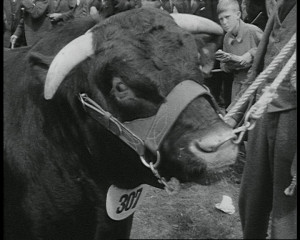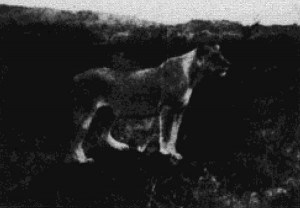
"Three short film sequences detailing competitions, parades and activities at local Agricultural Shows." (EAFA Database)
"Item is a film production of Dr. Willinsky's trip to Trinidad with his wife, Sadie. Filmed in the form of a travelogue, Willinsky intersperses footage of landmarks and the local population with captions that provide information about the country and its culture. Included are shots of sites around Port-of-Spain, cathedrals, mosques, a cricket match, a cocao bean farm, and the local population carrying out their daily activities. Sadie is regularly spotted sight-seeing and interacting with locals." Ontario Jewish Archives.
"Color film of the Turner children go a 'family' vacation. The children dressed as Ma, Pa, and child push a push cart to the Bryce Canyon National Park in Utah." Church History Library.
"Paul L. Kubitschek takes us to the Denver, Rio Grande & Western Railway for a journey to Silverton, Colorado. With all the thrill that comes to those who love the sway of cars and the resounding clatter of the rails amidst the grandeur of lakes and villages in high country flavored with ghost towns and mining arenas. The skeletons of yesterday where wind and rain have beat time and mute evidence of activity long ceased. Where silent memories of the past may be read from the weathered timbers and scraps of metal. A lone rocking chair left to enjoy the warm sun and the beauty of the hills" PSA Journal, Nov. 1958, 47.
"An entertaining documentary of the narrow-gauge train ride from Durango to Silverton, Colorado. Spectacular aerial views add to the impact." Oldfilm.org
"The story… opens in the sixteenth century with a scene showing the friendly relations between two neighbouring families as indicated by Roger de Hatherley and Richards Hawkins fishing the trout stream dividing their respective estates. Next we are shown their descendants at war over the fishing rights of the same stream, a family feud begins, and a love story which, although it does not run smoothly, ends happily" (Lovell Burgess 1932: 11).

"Tsavo by G. Christopher Bonar of Montreal, Quebec, Canada. Chris presents a fine study of the disappearing animal species of Africa. Tsavo is one of the game preserves established to try to halt this disappearance. This 14-minute 16mm film was awarded the Charles A. Kinsley Memorial Award for PSA-MPD Film of the Year, the Golden Microphone Award and the Nature Film Award" PSA Journal, Nov. 1971, 42.
"A lover of wild life and good fishing, Russell Jameson has a real fishing picture for those who would like to go into the wilds of British Columbia where the lakes and streams are generously populated with big ones which are willing to make the anglers' acquaintance. Most of the fishing is with barbless hooks for the sport and catch is returned to the stream uninjured. The musical score and sound effects add a great deal to this picture. It will tempt any fisherman with the time and money to indulge in the sport" PSA Journal, Nov. 1958, 48.
"Oscar Horovitz clicks with a second entry in this competition with his 'Tulips, Canals and Wooden Shoes,' documentary on native Holland." American Cinematographer, May 1952, 224.
Total Pages: 299